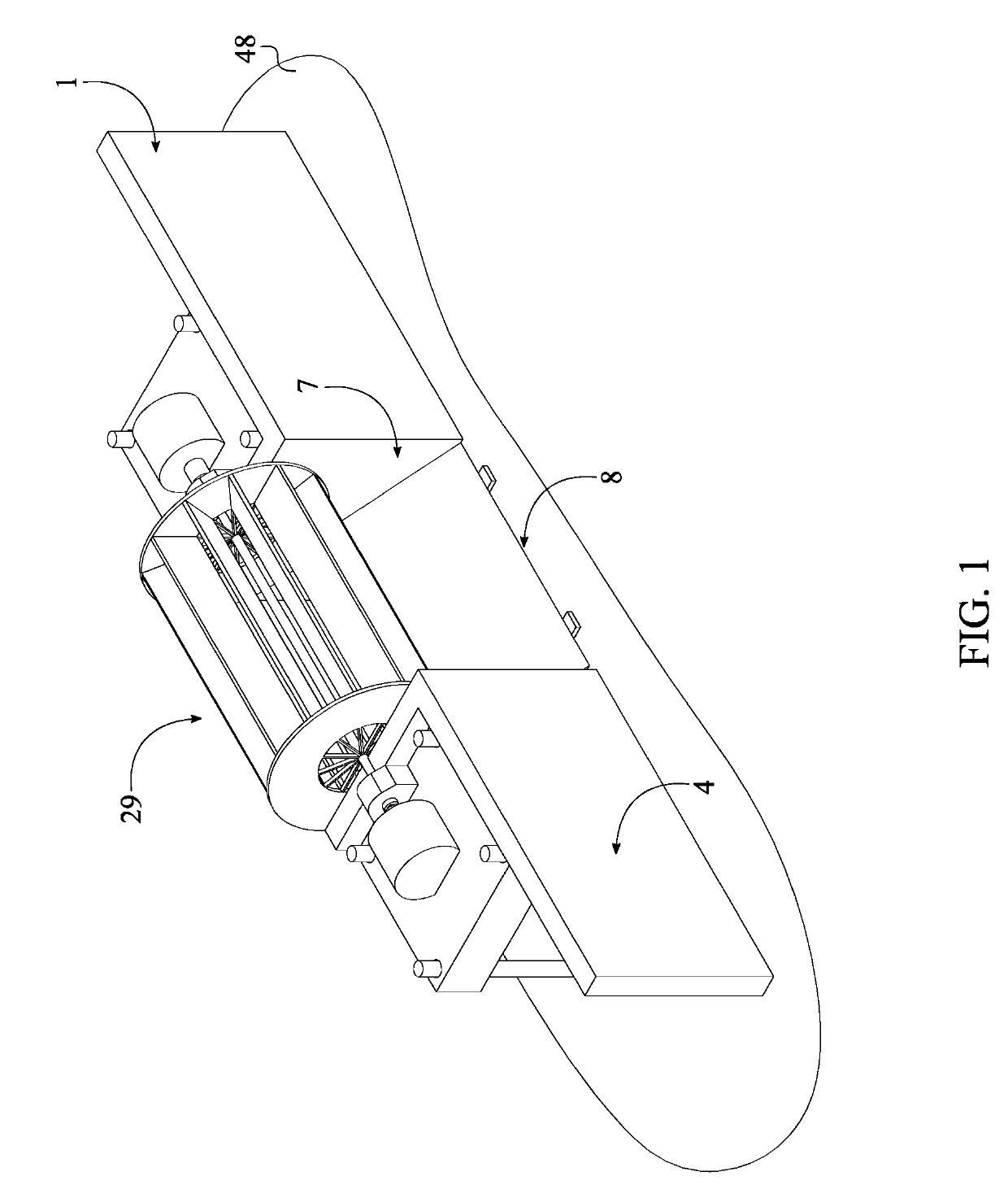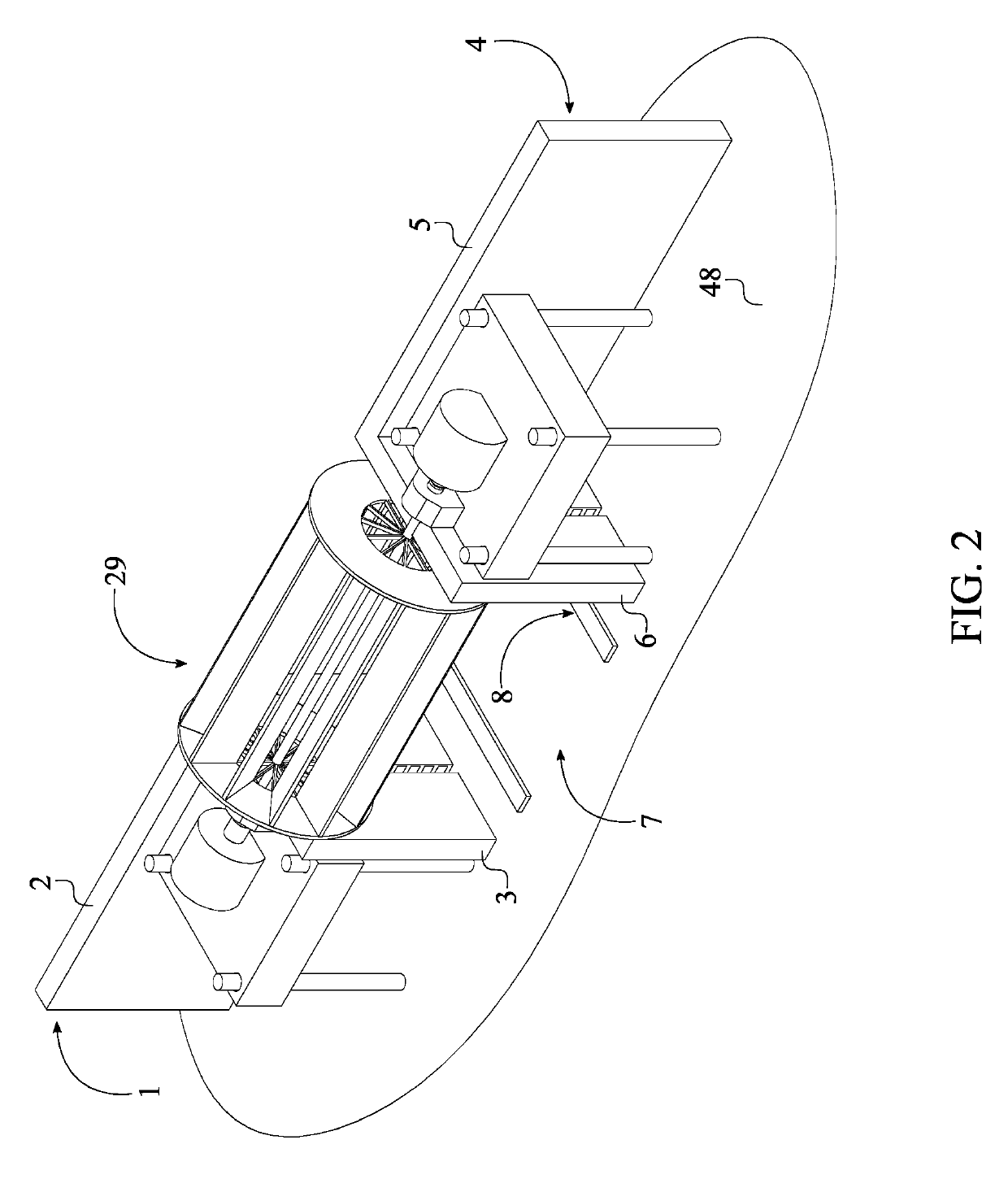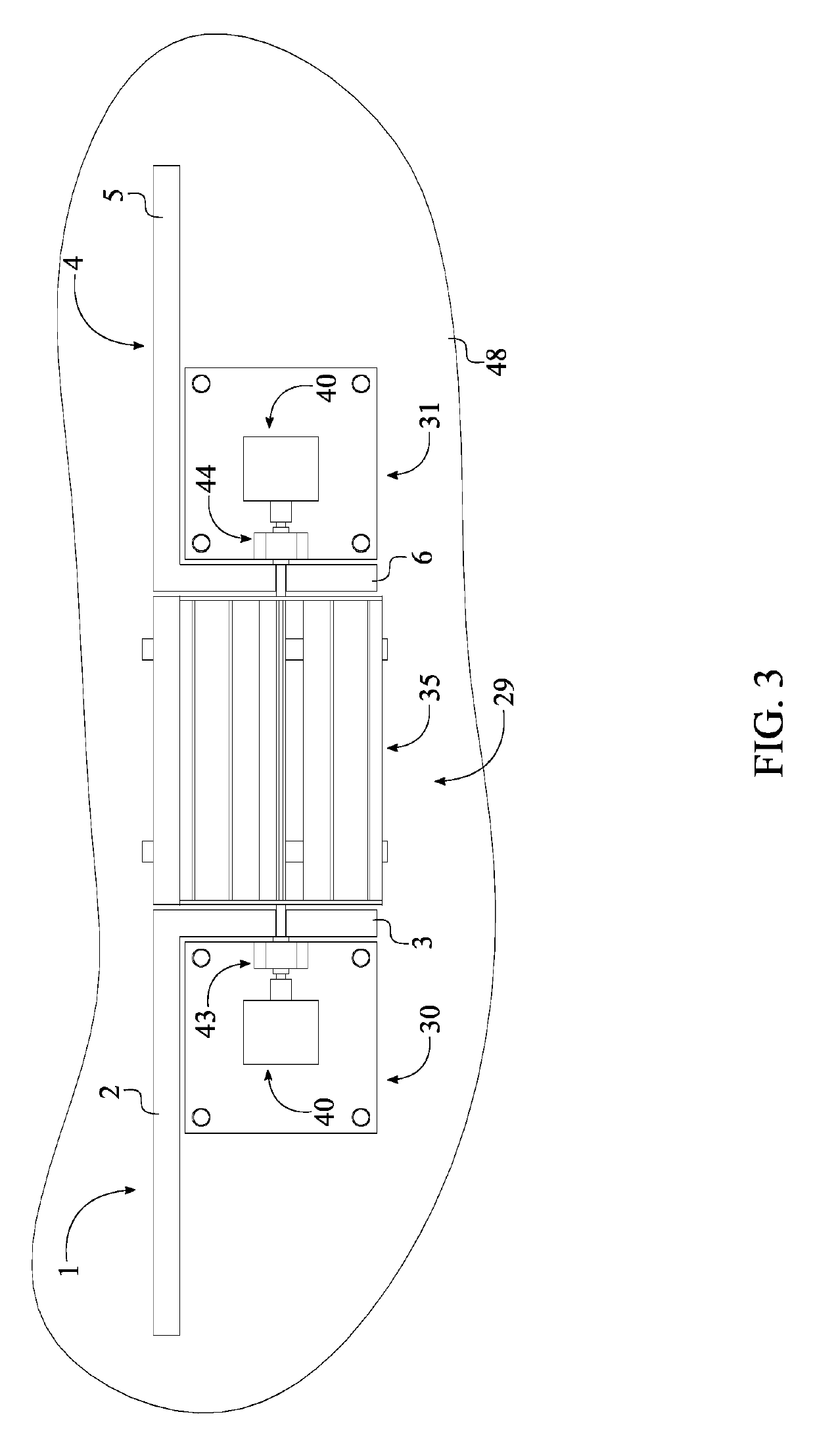Water Current Catcher System for Hydroelectricity Generation
- Summary
- Abstract
- Description
- Claims
- Application Information
AI Technical Summary
Benefits of technology
Problems solved by technology
Method used
Image
Examples
second embodiment
[0056]A second embodiment of the first gate operational mechanism 18 and the second gate operational mechanism 19 are configured similar to an inter-connected system. The functionality of the first gate operational mechanism 18 and the second gate operational mechanism 19 directly depend upon the support and the operation of the elevation adjustable hydroelectric generator unit 29. In reference to FIG. 13-14, the second embodiment of the first gate operational mechanism 18 and the second gate operational mechanism 19 each comprises a connector block 27 and a supported jacking system 28. More specifically, the gate hinge 13 is rotatably connected within the connector block 27 of the first gate operational mechanism 18 and the connector block 27 of the second gate operational mechanism 19. With respect to the first vertical slot 14, the supported jacking system 28 of the first gate operational mechanism 18 is terminally mounted in between the connector block 27 of the first gate opera...
PUM
 Login to View More
Login to View More Abstract
Description
Claims
Application Information
 Login to View More
Login to View More - R&D
- Intellectual Property
- Life Sciences
- Materials
- Tech Scout
- Unparalleled Data Quality
- Higher Quality Content
- 60% Fewer Hallucinations
Browse by: Latest US Patents, China's latest patents, Technical Efficacy Thesaurus, Application Domain, Technology Topic, Popular Technical Reports.
© 2025 PatSnap. All rights reserved.Legal|Privacy policy|Modern Slavery Act Transparency Statement|Sitemap|About US| Contact US: help@patsnap.com



